Resist The War On Democracy! Resist Operation Green Hunt !!
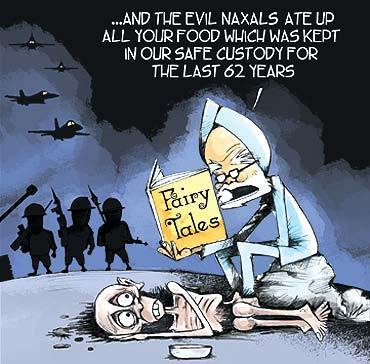 There is a war in place at the heart of India, in the regions richest in minerals, forests and natural resources, and inhabited by the most deprived and marginalized sections of our people – the adivasis.
There is a war in place at the heart of India, in the regions richest in minerals, forests and natural resources, and inhabited by the most deprived and marginalized sections of our people – the adivasis.
It goes by different names: ‘Operation Green Hunt’ and ‘A war on left-wing extremism’ are some of the most common forms.
The opponent is labeled the ‘Maoist menace’, ‘Naxal terror’, ‘left-wing extremism’ or ‘the gravest internal security threat’.
But in truth, this ongoing war represents a daily assault on the people of India and their basic democratic rights.
In the midst of the many claims and counter-claims that are being circulated, in a situation where the truth becomes the first casualty of war, where the present is affecting the lives of thousands of people while many others remain unconcerned, we are issuing this folder to discuss the many implications of the situation at hand.
Operation Green Hunt: A ‘Media-Created Myth’?
As Operation Green Hunt expands relentlessly in war theatres across the country, the ruling establishment now wants us to believe that there is actually no such offensive! The Home Minister has denied the existence of Operation Green Hunt and declared it to be a ‘media creation.’
But a combat operation is a combat operation by whatever name. And it is clear that not only is such an operation underway, but its scale is nothing short of an all-out military offensive:
- The Home Ministry talks of waging simultaneous operations on eleven theatres of war covering over 2000 police station areas in 223 districts.
- Recently, the Defense Research and Development Organisation (DRDO) declared it is developing technologies and weapons systems, including unmanned aerial vehicles (UAVs), ground penetration radars, foliage penetration radars (to track movement of vehicles and people in jungles) etc. to be used against the Maoists.
- A special central force called COBRA (Commando Battalion for Resolute Action) has already been raised and pressed into service. From 2005 onwards, in the shape of Salwa Judum, armed squads of tribals have been created and encouraged by the state. 640 villages were razed to the ground in this campaign, 1,50,000 people displaced, and many women molested and raped. Interestingly, the first financiers of Salwa Judum were Tata and the Essar!
- Draconian Acts like the Unlawful Activities (Prevention) Act, 2008, Chhattisgarh Special Public Security Act, 2005 (CSPSA) etc. are already in place. There are also talks of ‘amending’ the draconian AFSPA (presently deployed in Kashmir and the North East) to make it applicable to the entire country.
Operation Green Hunt is a ground reality. It is no ‘media created myth’.
Why Operation Green Hunt?
Operation Green Hunt is underway in the forested regions of Chattisgarh, Orissa, Jharkhand, Madhya Pradesh and Andhra Pradesh. These are areas rich in many kinds of resources and are home to many tribal communities. The Indian state, however, proclaims that they are ‘infested’ with Maoists. But it is no coincidence surely that these arenas of war are precisely those areas being eyed by corporate interests.
The resources of this region are manifold. They include: bauxite in Orissa, Iron ore in Chhattisgarh and Jharkhand states, and deposits of uranium, limestone, marble, dolomite, tin, graphite, copper, gold, diamonds, corundum, beryl, alexandrite and fluorite, and possibly coal in addition to teak, hardwood, bamboo, waters of several rivers, wildlife and fish. Those lining up to seek a share of the profits include a who’s who of the corporate world: the Mittals, Jindals, Tata, Essar, Posco, Rio Tinto, BHP Billiton and Vedanta. They have all signed MOUs with the respective state governments and are lying in wait to plunder and take control. Their ‘CEO’ is P. Chidambaram and their hopes rest upon the success of his war.
The Fifth Schedule of the Indian Constitution forbids the alienation of tribal land. But the UPA Government is now beyond such niceties. The real concern of the Indian ruling elite was expressed by the Prime Minister when he told parliament on 18 June, 2009: “If left-wing extremism continues to flourish in parts which have natural resources of minerals, the climate for investment would certainly be affected.” Hence, Operation Green Hunt.
Who Speaks for ‘Development’?
It is no secret that the areas where Operation Green Hunt is underway are among the most backward districts of our country. For decades, they have been marked by governmental neglect and institutional apathy.
When this is pointed out, people like Chidambaram often respond with the argument that it is the Maoists who are against ‘development’ (read schools, roads, telephone towers) of these regions. The corollary of this argument is that there can be no development until the Maoists are weeded out. This typically bureaucratic-militarist logic finds many votaries in the present government.
At the same time, one will also hear certain sections of the UPA speaking of the need to negotiate, for ‘peace and development’ as an alternative to civil war. Thus, Digvijay Singh recently wrote an article expressing his differences with P. Chidambaram on how to deal with the Maoists and accusing the latter of rigidity, “intellectual arrogance” and a lack of concern for the tribal people. Even Rahul Gandhi, the Congress’ yuvaraj has been found mouthing the need for ‘development’ at the very time that Chidambaram was spewing venom against the Maoist menace. Certain gullible commentators interpret this as an inner-party contradiction, much as they loved to see a conflict between Vajpayee and Advani during the NDA regime. But the Congress represents the ruling elite of our country. They understand how to combine brute force and palliatives, the stick and the sugar cube. They have mastered the art of speaking in two voices.
None of these voices even seeks to question the notion of ‘development’. Or to ask what kind of ‘development’ do people want? This is because the notion of ‘development’ that they espouse involves the neo-liberal agenda of big projects and big profits. Such ‘development’ takes place at the cost of people. It only reasserts the status quo: making the rich richer and the poor even poorer.
While Operation Green Hunt indicates the blatant use of repressive force by the state, less evident but even more pervasive are the structural violences perpetrated by the Indian state. In a recent interview Dr Binayak Sen held the Indian state guilty of genocide. He said, “Everybody thinks that the word ‘genocide’ has to do with direct killing but the United Nations Convention’s definitions on genocide include the creation of conditions—mental and physical conditions—which would render the survival of these communities under question, and we already have a situation of chronic famine… this famine envelops, according to the National Nutrition Monitoring Bureau, which is a government organization, 33 percent of the people in this country who have a clinically demonstrable chronic under-nutrition. And that includes 50 percent of the Scheduled Tribes and 60 percent of the Scheduled Castes.”
Many adivasi communities have survived so far because although the state denied them, they could still fall back on common property resources like land, water and forests. But now the corporate mafia and the state machinery seek to control even these. All this will serve to throw the original inhabitants of the land from the frying pan to hell-fire.
What Role Have the Maoists Played?
At the present juncture, across the country, progressive and democratic forces need to ensure broad-based cooperation to defeat Operation Green Hunt and the all-out war on democracy. But at the same time, there can be no condoning the reckless acts of the self-styled Maoists. Commentators have romanticised, deified and demonised ‘Maoism’ in many superficial ways; what we need, however, is a proper political engagement and critique.
Sophisticated Military Action: Only Path of Class Struggle?
The Maoists proclaim to draw upon the revolutionary legacy of Naxalbari. But they have divorced themselves entirely from the path of, Comrade Charu Majumdar, the founder of the CPI (ML), by delinking the question of arms from the larger political struggle. Charu Majumdar spoke of the need for “integration with the landless rural poor,” “politics in command”; warned against dependence on sophisticated weapons and sensational ‘actions’; he cautioned against remaining isolated from the mainstream and confined to jungles and stressed the need to develop movements in the plains and among peasants. The Maoist’s modus operandi stands in sharp contradiction of these principles.
Similarly, Lenin spoke of the essence of revolutionary tactics as consisting in:
“in combining the different forms of struggle, in the skilful transition from one form to another, in steadily enhancing the consciousness of the masses and extending the area of their collective action, each of which, taken separately, may be aggressive or defensive, and all of which, taken together, lead to a more intense and decisive conflict.” (Lenin, Collected Works, Volume 20, P 210)
But the Maoists only recognize military action as class struggle and neglect or negate the scope of exploring class conflicts operating at every level in a class society. They neglect the painstaking tasks of popular struggles, of mass resistance and political awakening of the rural poor. Instead, by concentrating on military actions alone, they get sucked into a vicious cycle of more military action, greater terror, less mass resistance, more reliance on big money through extortion to supply funds for sophisticated weapons, leading to further political degeneration. The gun comes to command politics, rather than politics commanding the gun.
Political Economy of Maoist Militarism
The centrality of sensational actions to Maoist politics — of kidnappings, political killings, raids of police stations, destruction of soft targets like unguarded railways stations and tracks — has been all too evident in recent times. This brand of politics runs, and can only run, on a vast economy of extortion networks, steady supply of big money and sophisticated arms. ‘Levies’ or ‘taxes’ of staggering amounts are collected by the Maoists from all kinds of sources in their areas of operation: from contractors, brick kiln owners, tendu leaf merchants, industrialists and bureaucrats, illegal forest product dealers, coal and iron ore miners to corporate houses and businessmen. The dependence on big money and the license to loot and exploit leads to ‘patron-client’ relationships and is at the cost of the cardinal revolutionary principle of reliance on the people. If the Maoist militarism were to actually eliminate the loot by state-corporate-mafia, then it will lead to an elimination of the very source of extortion money too, which funds and fuels Maoist ‘revolutionary’ militarism. What happens then to the Maoist project of “armed revolution” against the state, where would the money and arms come from? Thus, Maoist tactics, in their drive to sustain their much vaunted ‘revolutionary’ path, ends up sustaining rather than eliminating loot and plunder by the corporates in these regions. Such is their strange definition of ‘class struggle’! No wonder then that in areas marked by Maoist ‘dominance’ (even in the Bastar region of Chhattisgarh), corporate expansionism has hardly been stalled. In contrast, open and militant mass peoples’ resistance with no presence of the Maoists has time and again succeeded in pushing back and stalling MOUs in parts of West Bengal, Jharkhand and Orissa.
Masses Pay the Cost of Maoist ‘Actions’
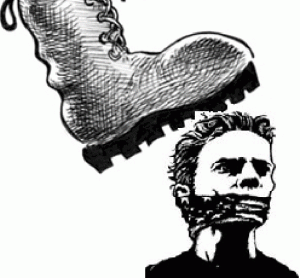 Recently, in Dantewada, the targets of Maoist attack were CRPF jawans. What is unfortunate and deplorable is that these CRPF jawans hailing from poor and common families were merely used as cannon-fodder in the state’s despicable game of furthering corporate interests. But it has been well-documented by human rights as well as civil rights organisations that the CRPF jawans in Chhattisgarh and elsewhere have consistently killed innocent people in false ‘encounters’, raped women and burnt villages. In this case as well, the CRPF jawan were returning not from a peaceful sortie but from a 3-day ‘area domination’ operation in the jungles of Chhattisgarh. After every such Maoist attack, it is the local people who have to bear the brunt of state repression. After the Dantewada attack too, the same pattern was repeated – entire adivasi villages fled the area for fear of police/CRPF reprisals. The Maoist cadres and squads have the wherewithal to escape to the jungles, while the common people are left to face ‘combing’ and ‘searching’ operations, as well as ‘encounters’.
Recently, in Dantewada, the targets of Maoist attack were CRPF jawans. What is unfortunate and deplorable is that these CRPF jawans hailing from poor and common families were merely used as cannon-fodder in the state’s despicable game of furthering corporate interests. But it has been well-documented by human rights as well as civil rights organisations that the CRPF jawans in Chhattisgarh and elsewhere have consistently killed innocent people in false ‘encounters’, raped women and burnt villages. In this case as well, the CRPF jawan were returning not from a peaceful sortie but from a 3-day ‘area domination’ operation in the jungles of Chhattisgarh. After every such Maoist attack, it is the local people who have to bear the brunt of state repression. After the Dantewada attack too, the same pattern was repeated – entire adivasi villages fled the area for fear of police/CRPF reprisals. The Maoist cadres and squads have the wherewithal to escape to the jungles, while the common people are left to face ‘combing’ and ‘searching’ operations, as well as ‘encounters’.
Targeting Civilians
The Maoists have however shown time and again that they make no distinction between the police and civilians. In 2006 they entered the Salwa Judum camp in Errabore and killed 42 people (including women and children). In February 2010, Maoists in a perverted definition of ‘class war’ brutally murdered 12 dalit villagers and wounded 50 others in Phulwaria-Korasi village of Jamui district of Bihar. These massacres have rightly been strongly condemned by several human rights organisations. Commenting on the Jamui massacre, PUDR for instance stated: “what causes concern to us is a party which claims to represent and fight for the emancipation of the `poorest of the poor’, shows such callous disregard for lives of the very same people, and considers them to be a fair target for acts of revenge”.
The Maoists continuing engagement in reckless anarchist acts only serves to alienate and antagonize democratic opinion in this country. And this in turn, makes it easier for the state to drum up support for openly brutal measures of repression.
Political Struggles Cannot Be Simplified by Guns
The question remains of the extent to which the politics of the Maoists provides a viable path of struggle. This is because the whole thrust of their strategies and activities is premised on the illusion that just as in China during the 1930s and 1940s, in present-day India too “armed revolution is confronting armed counter-revolution”. But such formulations do little to consider the tremendous changes that Indian politics — both in the countryside and in the cities — have undergone in the decades since the Naxalbari uprising.
As K. Balagopal has argued, the Maoist tactics may work well while dealing with the social and political structures of feudalism in the countryside. “But the subtlety of forms of power other than the feudal makes focused confrontation of a violent kind difficult to operationalize. Violence may be good or bad, necessary or unnecessary, but it is always crude. Intelligent exercise of power, on the other hand, is subtle. So is capitalist rationality in general. It is sometimes but not always crudely oppressive. It also comes with promises of a better life for the middle classes and employment for the poor… It gives a little and takes a lot but it gives at one place and takes at another. It speaks in a dozen tongues, each offering a limited rationality, while the totality is hidden behind layers or opacity or subterfuge. Its lies require vintelligent nailing, and its logistics require subtle handling to immobilize it.” … “To put it simply, you can hold a gun to a landlord’s head but special economic zones or the Indo-US Nuclear Deal have no head to put a gun to.”
It is when faced with questions like these, when challenged with the political predicament of our times, that the self-styled Maoists are unable to offer any convincing answers.
Maoists routinely justify “Boycott” of elections and Parliament as the sole touchstone of revolutionary politics by quoting Lenin’s famous remark- ‘Parliament is a pigsty’. But when we read Lenin’s ‘pigsty’ remark, we find that he is actually talking of the correct tactics of parliamentary struggles from a revolutionary perspective: After the failure of the first Russian Revolution of 1905, Lenin declared: “Since the accursed counter-revolution has driven us into this accursed pigsty [the Duma, which was even less representative and more reactionary than Indian Parliament], we shall work there too for the benefit of the revolution, without whining, but also without boasting.” (Against Boycott, Lenin, Collected Works, Volume 13)
“Political Power Flows From The Barrel of the Gun”: What did Mao Actually Say?
Maoists in India defend their singular stress on military actions by quoting Mao’s famous line, “political power grows out of the barrel of a gun.” But this quotation is almost always used out of context to convey an absolutely distorted meaning.
In the article Problems of War and Strategy, Mao discusses the fundamental differences between bourgeois democracies and China, which “has no democracy” (being ruled by feudal warlords) and “no national independence” (being directly oppressed by different imperialist powers). Mao then elaborates on a “peculiarity of China’s” – literally every party or grouping, from Sun Yat-sen’s Kuomintang and the Progressive Party to extremely reactionary parties, have to have their own armies. In this backdrop and particularly in the context of national war of resistance to Japan, he wrote: “…. Every Communist must grasp the truth, “Political power grows out of the barrel of a gun.” Our principle is that the Party commands the gun, and the gun must never be allowed to command the Party.”
The killing of 12 dalits in Jamui (Bihar) or the more recent killings of PCPA activists in Lalgarh (West Bengal) by the Maoists clearly shows that it is the gun, rather than correct class politics, which is commanding the CPI(Maoist) party.
Do Maoists Really Boycott Elections and Ruling Class Parties?
Maoists claim to disdain parliamentary politics and call for ‘boycott’ of elections. But to themselves, they concede that the importance of Parliament and State legislatures as the seat of political power cannot be wished away and that they too have a stake in which party forms government. So they DO ACTUALLY take part in electoral politics. But they do so in their own distorted ways: indirectly, secretively, conspiratorially, usually by supporting one reactionary party against some narrowly conceived “main enemy” — another reactionary or “revisionist” party.
This tactic-turned-strategy was most ‘successfully’ implemented in Andhra Pradesh in the 2004 assembly elections. They enforced one-sided boycott on TDP and BJP while canvassing in favour of Congress candidates and the ‘success’ lay in the fact that Chandrababu Naidu, whom they had earlier tried to eliminate by pure ‘Maoist’ means, was now removed from power by parliamentary means and a ‘friendly’ Congress government installed. It is another matter though that after some apparent progress in the talks that ensued, the ‘friend’ suddenly turned hostile and launched a repressive campaign even more ferocious than that of Chandrababu Naidu. In other states too, Maoists have secretly mobilized votes for one or the other ruling party during elections. The hobnobbing of the Maoists with the Trinamool Congress too is an open secret, to the extent that in September 2009, Maoist Politburo member Kishenjee, in Kolkata’s Ananda Bazaar Patrika and some other dailies, gave an open and detailed justification of why he thought Mamata Banerjee was the fittest person to replace Budhhadev Bhattacharya as the Chief Minister! It is also on record how the Maoists in recent elections have been sharing their ‘resources’ and ‘cadres’ with Praja Rajyam in Andhra and JMM in Jharkhand!
Reject Maoist Militarism and CPI(M)’s Opportunism:
Towards a Revolutionary Path for the Left Movement
The CPI(M)-led politics of compromise and capitulation vis-à-vis the ruling classes has all but collapsed on the soil of Bengal in the wake of naked state repression on people’s movements at Singur, Nandigram and Lalgarh and their open espousal of OGH. Naturally, CPI(M)’s projection on the all-India plane is also in for a serious crisis.
But is the ‘Maoist’ model the only model of revolutionary practice in India? Does one have to choose between the parliamentary opportunism of the CPI(M) and the militarism (combined with underhand tactical ‘deals’ with ruling parties) of the Maoists? In the face of brutal state repression, is there no option but to adopt the one-dimensional militaristic path of the Maoists?
We contend otherwise. Take the example of the CPI(ML) Liberation, born from the Naxalbari movement, which has offered a model of revolutionary practice distinct from both the opportunism of the CPI(M) and the anarcho-militarism of the Maoist variety.
The CPI(ML) has resolutely resisted the notion that anarcho-militarism of the Maoist variety as the only answer to state repression and suppression of democracy. In the face of intense state repression in various forms (massacres and killings by the Salwa-Judum-type private militia Ranveer Sena, fake encounters and police firings, and targeted political assassinations like that of former JNUSU President Comrade Chandrashekhar and CPI(ML)’s Jharkhand MLA Comrade Mahendra Singh), the CPI(ML) resisted the state’s attempts to push it underground.
For the CPI(ML), parliamentary practice is a complement to militant mass struggles. In contrast to the secret, shady deals struck during elections by the Maoists, the CPI(ML) uses the election arena to openly and boldly expose ruling class formations and enhance the independent political assertion of the rural poor and working class. CPI(ML) MLAs are independent voices of people’s struggles in state Assemblies in Bihar and Jharkhand, acting as the only revolutionary opposition – and CPI(ML) political leaders, candidates and elected representatives have often faced false cases, jail and have even laid down their lives in the struggle.
In this process, the CPI(ML) has faced brutal assaults by the Maoists too, who have functioned as pawns of ruling class parties (a routine ‘tactic’ of the Maoists which is as common as their not-so-secret electoral deals with one ruling party or the other). For example, acting in collusion with the then ruling RJD and the local police administration, the Maoists attacked the CPI (ML) office at Paliganj, Bihar, in August 2004 — barely 6 months before the February 2005 assembly elections — killing five comrades in their sleep at the dead of night and officially justified the killings. In Jharkhand, CPI (Maoist) squads allowed themselves to be utilised by the ruling BJP and the notorious SP of Giridih in gunning down CPI(ML) MLA and the lone voice of people’s struggles within the Jharkhand Assembly, Comrade Mahendra Singh during election campaign in January 2005.
While the CPI(ML) rejects the anarcho-militaristic and one-dimensional Maoist tactics, at the same time the CPI(ML) has also spearheaded struggles against state terror in the name of combating Maoists and has been a leading and resolute force against Operation Green Hunt.
The War on People Must Stop
Operation Green Hunt is being used by the Government of India and the various state governments not only to tackle the Maoists but to suppress every movement of the working people and stifle every democratic dissent. Reports of indiscriminate detention in false cases and on fabricated charges, custodial torture and harassment, cold-blooded executions of activists and ordinary tribal villagers dressed up as ‘encounters’, massacres of adivasis by security forces and arrest and suppression of witnesses to such massacres, and attacks on the press and on the freedom of expression are coming in from every corner of the country. Fact-finding teams trying to make an independent assessment of the actual situation have all been debarred from visiting ‘conflict zones’ whether in Chhattisgarh or West Bengal. The dark days of the Emergency seem to be staging a comeback in so many ways.
Wars are not fought in the killing fields alone. They are also fought in the minds of men. The corporate media is working overtime to manufacture a ‘national consensus’ in favour of the military offensive. The RSS session at Rajgir has expressed its full-throated support to Chidambaram’s ideas. The CPI(M) Politbureau issued a statement on February 16 2010 calling for speeding up OGH. Not a word was spoken about possible dialogue.
Resonances of America’s ‘war on terror’ and the ‘coalition of the willing’ can be seen in the pronouncements of the Indian state today. Chidambaram brackets all intellectuals and the civil society, bracketing them all with Maoists and launching an all-out witch-hunt. The case of Dr. Binayak Sen is all too well known, but there are many more who are suffering the same fate, being hounded and persecuted for speaking out against the state. Adivasis who resist the ‘MOUists’ are branded as ‘Maoists.’ And the Maoists’ own lack of concern for people’s lives stood out in an interview of Politburo Member Bimal with Mint (22 June, 2009):
Mint: A lot of civilians might die in the crossfire. Wouldn’t you be morally responsible for those killed?
Bimal: In a war, there are no civilians – there are people either on your side or against you.
This is how the Maoists routinely justify the killing of poor adivasis, dalits, women and children in their own distorted definition of ‘class struggle’.
Our uncompromising demand in this situation is that the Government declares an immediate end to Operation Green Hunt and all offensives in the name of ‘combating Maoists’. We call upon the student community to oppose the present offensive of the Indian state and support the people of India in their basic struggles for land and livelihood, justice and democracy, dignity and development.
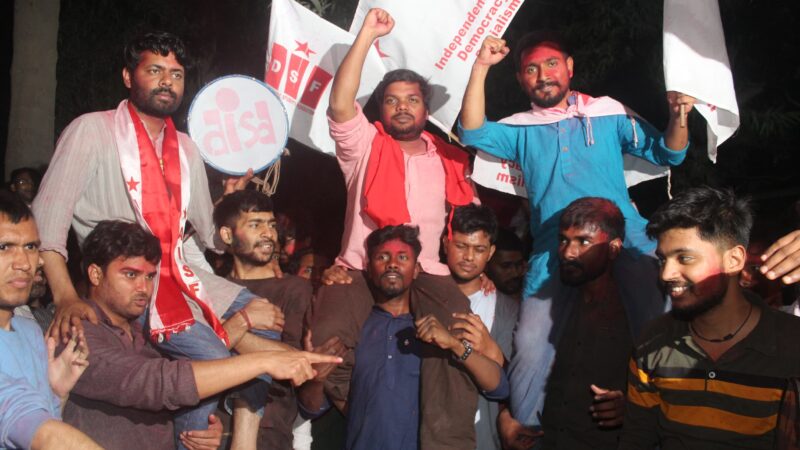
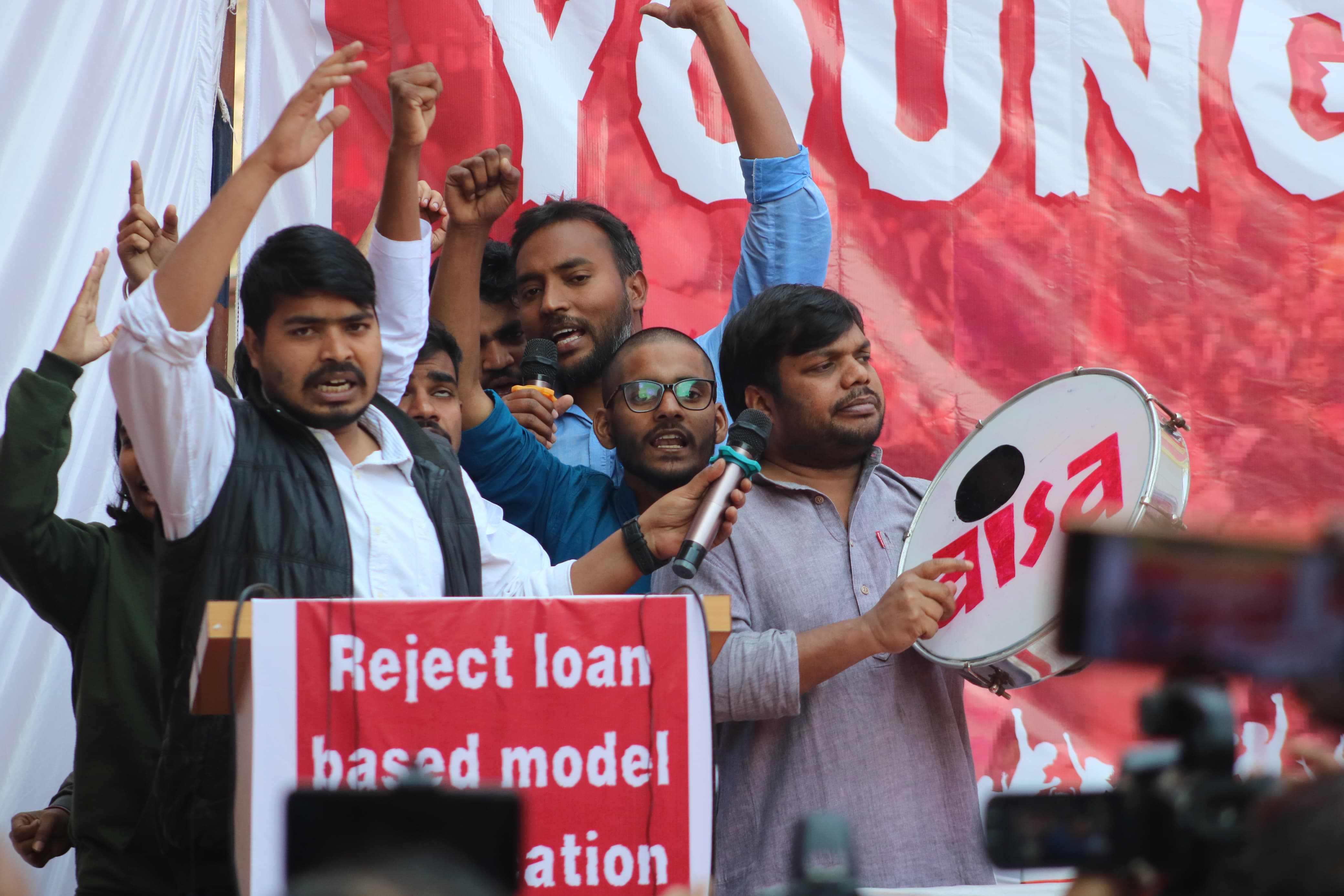
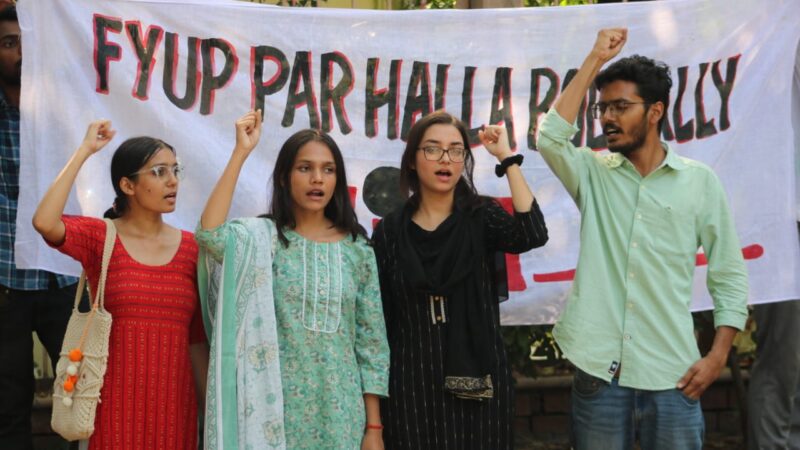
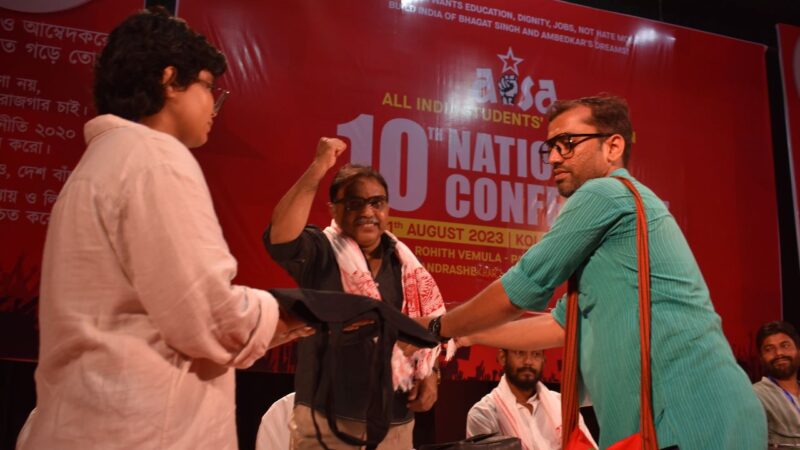
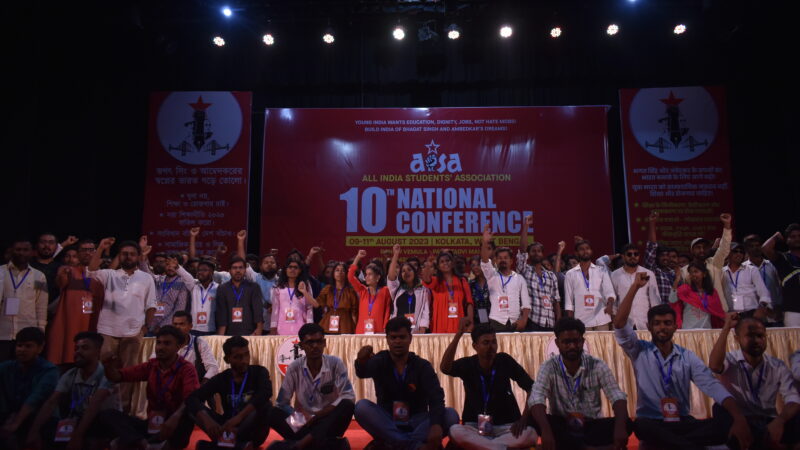
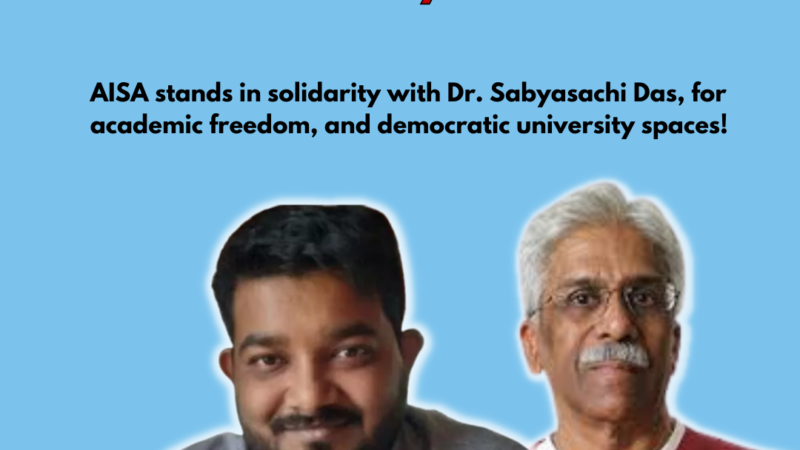
The people in cities simply view the operation as a way of combating terrorism… the real issue and reasons that hav led to the current situation remains obscured from public eye.
I am linking this page to my own blog, in the hope that some of my friends will go through the details…
operation Green Hunt Down Down!!
I got this web site from my pal who informed me regarding this site and at the moment this time I am visiting this website and reading very informative articles or reviews here.